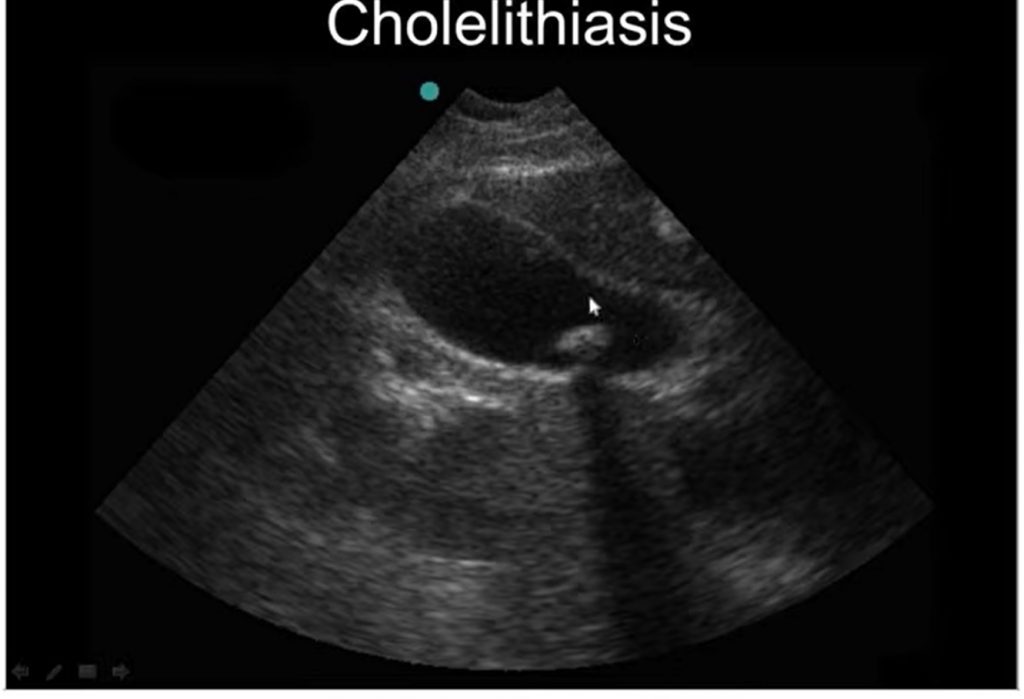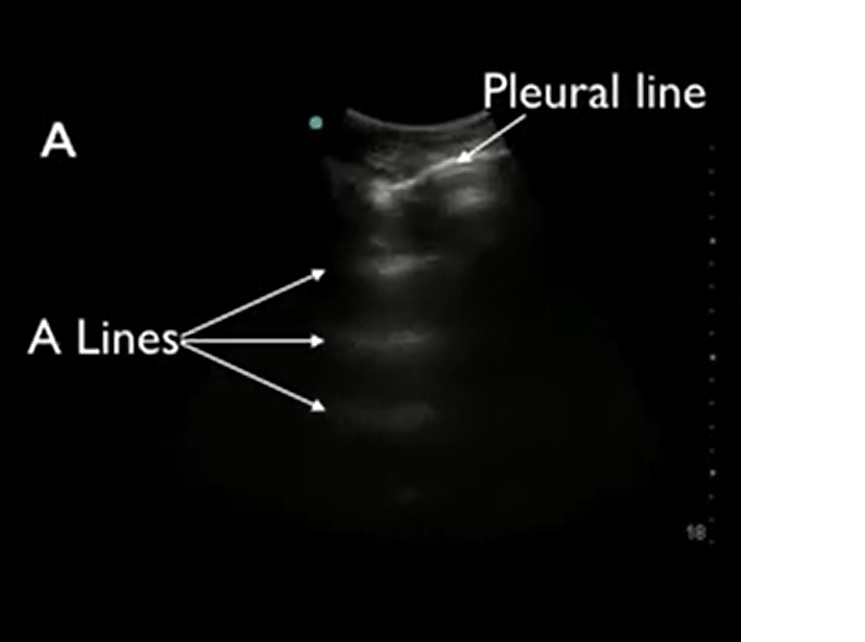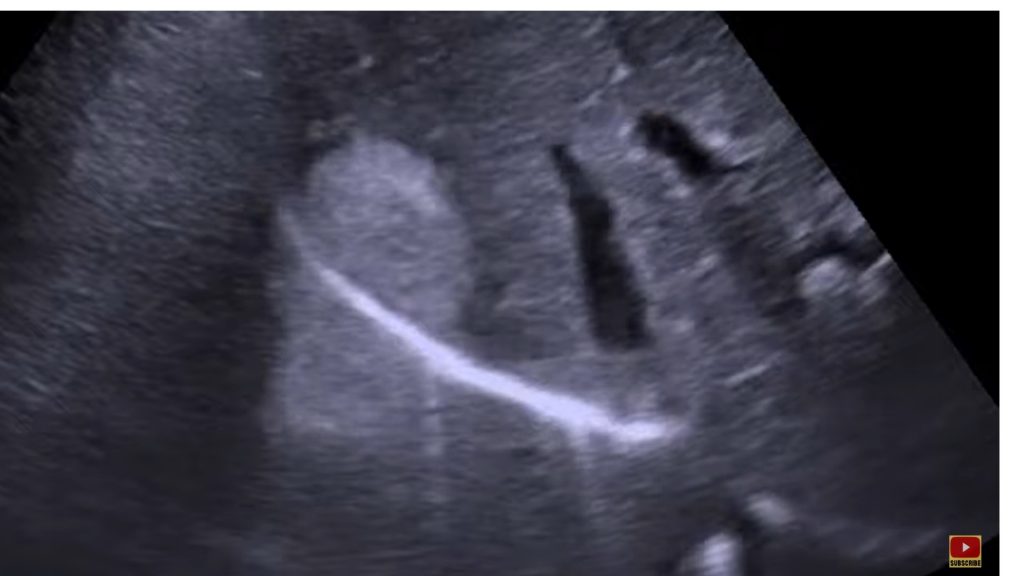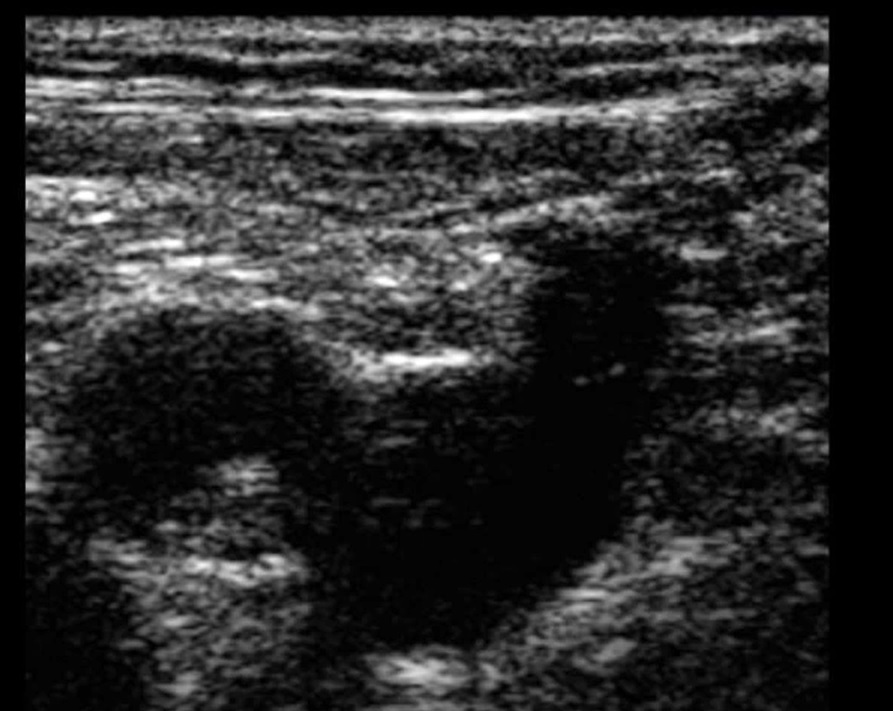5 Artifacts and Its Interpretation
Mohammad Firdaus Bolong
Effects and Artifacts
There are a few ultrasound effect that need mastering when doing bedside ultrasound scan.
Acoustic Shadowing
Acoustic Shadowing is a condition where the effects of the organ or a structure itself becomes a hindrance for the sound wave to go through that makes it unable to visualise distal structure beyond it. This is particularly useful and helpful in diagnosis of conditions such as Biliary Calculi or Renal Calculi.
This happens as the soundwave emitted by the probe goes through the organ you are scanning, and as it travels through a medium, some or all the waves will be reflected back to the transducer which will be projected on the screen for interpretation.
The density of the structure will determine how much of the waves will be reflected back. Denser structures such as stones, ribs and bones will reflect ALL waves, thus making it impossible to view structures beyond it as the wavs can’t penetrate through these kind of structures.

Acoustic Shadowing in Biliary Ultrasound due to the presence of Biliary Calculi. Adapted from “05 Gallbladder” by SinaiEMUltrasound is licensed under CC BY 4.0
Reverberation
This phenomenon happens when waves travel back and forth or “bounces” in between two structures which are highly reflective. It usually appears as multiple bright lines or arches that is uniformly spaced, such as those that appears in Lung Ultrasound.

Image showing Reverberations phenomenon during Lung Ultrasound. Adapted from “Video 13 A normal and B abnormal lines in the lung US” by International Emergency Medicine Education Project is licensed under CC BY 4.0
Mirror Image Artefact
Mirror image artefact happens when an ultrasound beam encounters bright reflectors such as diaphragm. This will reflect back some of the energy but instead of travelling back to the transducer, this will encounter another another structure and reflected back to the initial bright structure and then back to the transducer. This will create a false mirror image on ultrasound monitor such is that there appears to be a duplicate of the structures.

Image showing diaphragm ultrasound with mirror artefact shown on the left side of the diaphragm, where the lung tissue should be. Adapted from “ULTRASOUND ARTIFACTS | Sonography Tutorial | Dr Sanjeev Mani | Exam Question in Radiology” by Indian Radiologist is licensed under CC BY 4.0
Refraction Artefact
This artefact occurs when an ultrasound beam propagated perpendicularly or obliquely across a boundary of mediums with different propagation speeds. It will look like an acoustic shadowing and usually seen for example at the edge of a blood vessel in transverse orientation.

Image showing refraction artefact during vascular ultrasound on right lower limb of a patient. Adapted from “08 Vascular Access” by SinaiEMultrasound is licensed under CC BY 4.0
Conclusion
There are many other types of artefacts and effects that is not covered by this handbook. Mentioned artefacts and effects are the important ones at the start of your ultrasound journey as it helps with the interpretation of images which will help in the diagnosis of your patient.
Key Takeaways
- Acoustic shadowing can be mistaken with refraction artefact
- Ultrasound beam and waves behaves differently through different mediums
- Artefacts and effects needs to be learnt and mastered to help excluding mistakes in diagnosis
Effects and Artefacts Quiz

